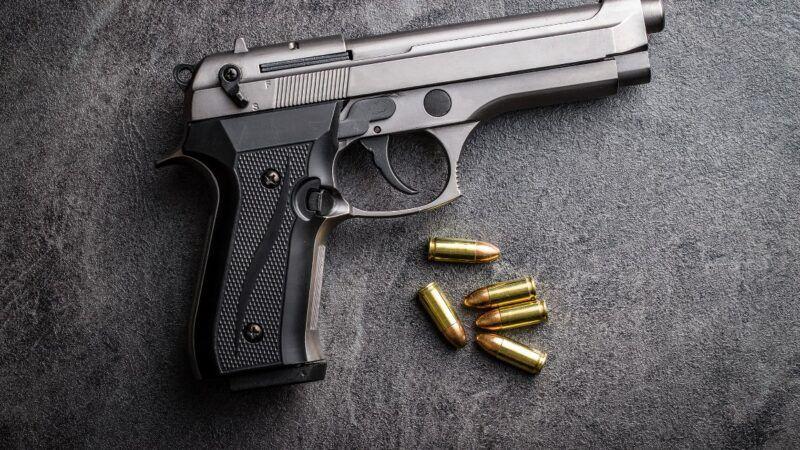Table of Contents
- The Tactical Advantage of Controlled Fire
- Optimizing Ammunition Efficiency in High-Stress Situations
- Training Techniques to Enhance Precision Under Pressure
- The Role of Firearm Maintenance in Consistent Performance
- Key Takeaways
The Tactical Advantage of Controlled Fire
Controlled fire offers a distinct edge by maximizing precision and conserving ammunition. Rather than expending rounds indiscriminately, shooters who master burst fire techniques enhance their accuracy with each shot. This approach reduces recoil impact and allows for quicker target reacquisition, which is crucial in dynamic scenarios. By employing short, measured bursts, operators maintain better control over their firearm, ensuring each bullet contributes purposefully to the engagement rather than being wasted in uncontrolled spray.
Moreover, controlled fire supports strategic adaptability on the battlefield. It enables shooters to:
- Manage barrel heat, preventing overheating and maintaining weapon reliability
- Reduce the likelihood of friendly fire incidents by improving shot placement
- Enhance communication and coordination with team members through deliberate shooting patterns
- Optimize ammunition longevity, allowing sustained operational readiness during prolonged engagements
Incorporating controlled fire into training routines consistently translates into superior performance under pressure, where every burst holds tactical significance.
Optimizing Ammunition Efficiency in High-Stress Situations
In high-stress scenarios, every shot fired demands precision and strategic intent to ensure maximum effectiveness. Firearm users must prioritize shot placement and rate of fire, understanding that conservation of ammunition is not merely a resource management strategy but a critical survival tactic. Implementing controlled bursts rather than continuous fire improves accuracy and reduces recoil, enabling quicker target reacquisition. Equally important is maintaining situational awareness to avoid unnecessary shots that can compromise safety and deplete vital reserves. Training under simulated stress conditions helps develop the muscle memory and mental discipline needed for steady performance when it matters most.
Key techniques to enhance ammunition efficiency include:
- Target prioritization: Focus on threats that pose the highest risk to ensure each bullet neutralizes maximum danger.
- Trigger discipline: Avoid instinctive firing by breathing control and smooth trigger pulls to maintain shot accuracy.
- Equipment familiarity: Know your firearm’s balance and recoil patterns to anticipate and control shots effectively.
- Regular dry-fire practice: Reinforce motor skills and enhance precision without expending live rounds.
Training Techniques to Enhance Precision Under Pressure
Effective firearm use demands more than basic marksmanship; it requires cultivating the ability to maintain unwavering focus when stakes are high. Integrating stress inoculation drills into your regimen conditions the mind and body to perform fluidly under pressure. Techniques such as timed shooting sequences, rapid target transitions, and simulated adverse scenarios sharpen muscle memory, allowing precise shot placement even when adrenaline surges. Practicing controlled breathing and deliberate trigger control during these exercises ensures that each shot is deliberate and efficient, minimizing wasted ammunition and maximizing threat neutralization.
To develop exceptional consistency, it is critical to blend technical skills with situational awareness refinement. High-pressure training should incorporate:
- Dynamic shooting drills: Engage moving or multiple targets to replicate real encounter unpredictability.
- Stress-inducing simulations: Use noise, time constraints, and decision-making challenges to elevate cognitive load.
- Performance feedback loops: Utilize video analysis or expert coaching to adjust mechanics and tactics in real time.
Through dedicated practice tailored to the realities of firearm use under duress, shooters transform reflexes into precise, split-second actions, ensuring every round fired delivers maximum impact.
The Role of Firearm Maintenance in Consistent Performance
Consistent performance in firearm use hinges on meticulous upkeep that extends beyond routine cleaning. A well-maintained weapon ensures reliability, precision, and safety-crucial elements that cannot be compromised in high-stress environments. Regular maintenance prevents the accumulation of residues, mitigates wear on mechanical components, and safeguards against malfunctions that could disrupt operation at critical moments. By embracing a disciplined approach to upkeep, users can significantly reduce the risk of misfires or jams, thereby maintaining the readiness and efficiency of their firearm.
Key maintenance practices include:
- Thorough cleaning after use to remove powder residue and debris
- Lubrication of moving parts to minimize friction and wear
- Regular inspections to identify and replace worn or damaged components
- Proper storage to protect against moisture and corrosion
Key Takeaways
In conclusion, understanding the critical importance of maximizing every burst in firearm use is essential for both safety and effectiveness. Whether in law enforcement, military operations, or controlled training environments, ensuring that each shot counts can significantly influence outcomes and reduce unnecessary risk. As technology and training methods continue to evolve, the focus on precision and impact remains paramount. Stakeholders must prioritize responsible firearm practices that emphasize quality over quantity, reinforcing the principle that every burst should indeed count.Check Our Other Blogs
- StunGun – Your Trusted Source for Stun Guns, Laws, and Self-Defense Tips
- PepperSprayLaws – Your Trusted Resource for Pepper Spray Information
- StunGunLaws – Your Trusted Guide to Stun Gun Legality and Safety




